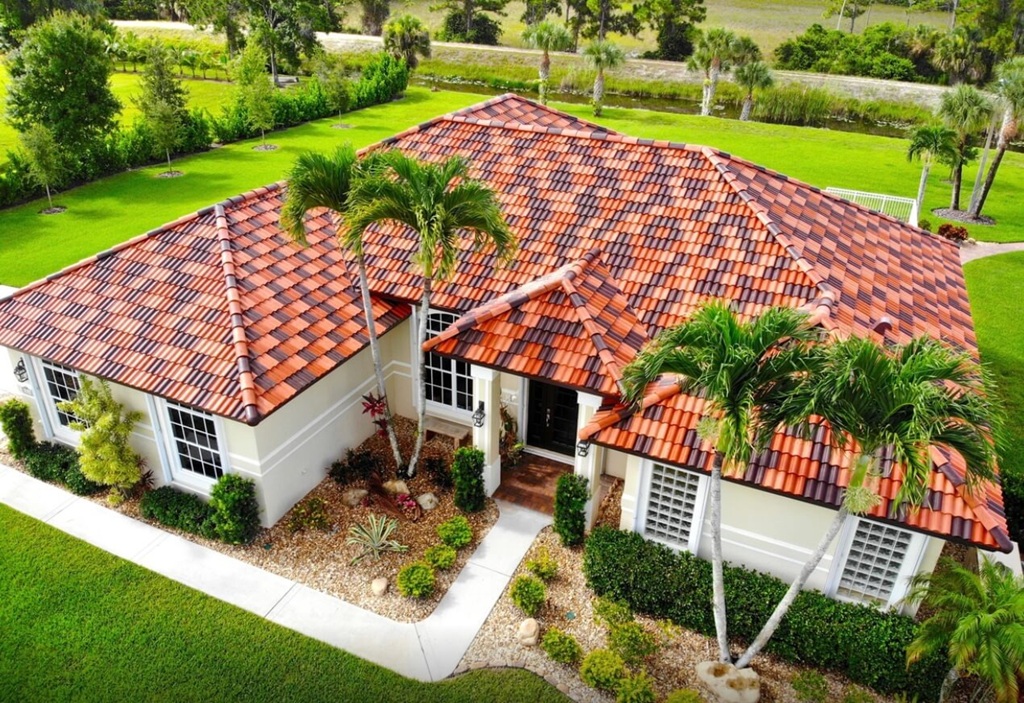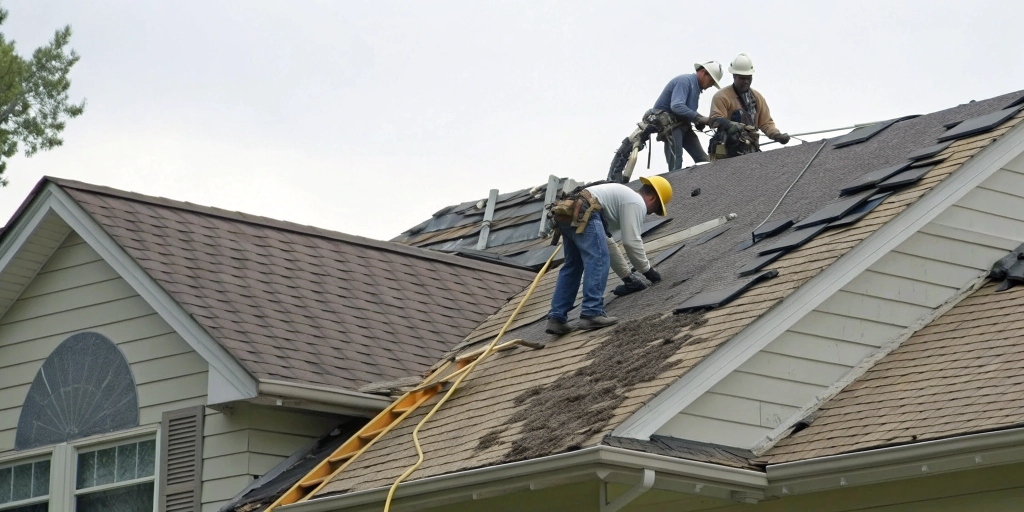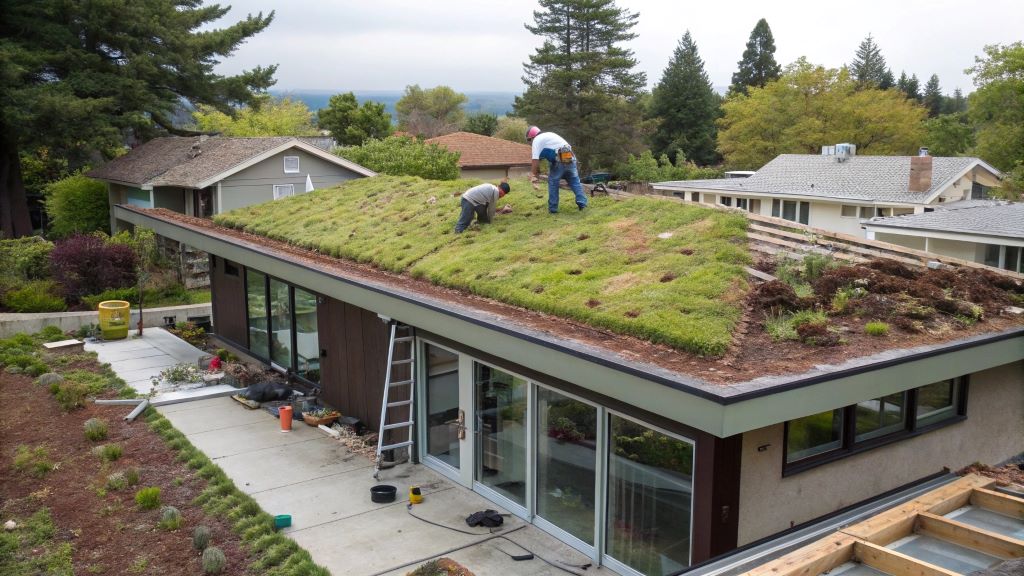In the ever-evolving landscape of home construction and renovation, the choice of roofing material stands as a pivotal decision, impacting not only the aesthetic appeal but also the long-term durability and energy efficiency of a structure. While modern advancements have introduced a plethora of synthetic options, the enduring allure of roof tiles continues to captivate homeowners worldwide. This article delves into the multifaceted world of roof tiles, exploring their diverse types, inherent advantages, and how they seamlessly blend classic elegance with contemporary functionality, making them a prime choice for modern homes.
The term “roof tiles” encompasses a broad spectrum of materials, each possessing unique characteristics that cater to diverse architectural styles and climatic conditions. Traditionally, clay and terracotta tiles have held a venerable position, renowned for their natural beauty and exceptional longevity. These tiles, crafted from fired clay, exhibit a rich palette of earthy tones, ranging from warm reds and oranges to subtle browns and grays. Their inherent porosity allows for natural ventilation, contributing to a cooler interior environment, particularly in warmer climates. Slate tiles, another classic option, are prized for their unparalleled durability and distinctive, layered texture. Quarried from natural slate deposits, these tiles are virtually impervious to weathering, boasting an impressive lifespan that can extend for centuries. Concrete tiles, a more modern iteration, offer a cost-effective alternative while mimicking the aesthetic appeal of clay or slate. Manufactured from a mixture of cement, sand, and aggregates, concrete tiles are available in a vast array of colors and profiles, providing homeowners with greater design flexibility. Metal tiles, often crafted from steel or aluminum, are gaining traction for their lightweight nature, exceptional strength, and reflective properties, which help to reduce heat absorption. These tiles are particularly well-suited for regions prone to extreme weather conditions, offering superior protection against wind, rain, and hail.
One of the most compelling advantages of roof tiles lies in their exceptional durability. Unlike asphalt shingles, which typically require replacement every 20-30 years, clay, slate, and concrete tiles can endure for 50-100 years or even longer, depending on the quality of the material and installation. This longevity translates into significant cost savings over the lifespan of a home, as homeowners are spared the expense of frequent roof replacements. Moreover, roof tiles exhibit remarkable resistance to weathering, including extreme temperatures, heavy rainfall, and strong winds. Their inherent strength and density prevent warping, cracking, and fading, ensuring that the roof maintains its aesthetic appeal and structural integrity for decades. In regions prone to wildfires, clay and concrete tiles offer superior fire resistance, providing an added layer of protection for the home and its occupants. Moreover, metal tiles provide excellent protection against fire and extreme weather.
Beyond their durability, roof tiles contribute significantly to the energy efficiency of a home. The thermal mass of clay, concrete, and slate tiles helps to regulate interior temperatures by absorbing and releasing heat gradually. This passive cooling effect reduces the reliance on air conditioning during hot summer months, leading to lower energy bills and a more comfortable living environment. Furthermore, the natural ventilation provided by clay tiles helps to prevent the buildup of moisture and condensation, minimizing the risk of mold growth and improving indoor air quality. Metal tiles, particularly those with reflective coatings, help to minimize heat absorption, therefore keeping the house cooler.
The aesthetic versatility of roof tiles is another key factor contributing to their enduring popularity. Available in a diverse range of colors, shapes, and textures, roof tiles can complement a wide array of architectural styles, from traditional Mediterranean villas and Spanish Colonial homes to contemporary minimalist designs. Clay tiles, with their warm, earthy tones, evoke a sense of timeless elegance, while slate tiles add a touch of rustic charm and sophistication. Concrete tiles offer a myriad of customization options, allowing homeowners to achieve the desired aesthetic without compromising on durability or affordability. Metal tiles provide a sleek, modern look that complements contemporary designs. The ability to mix and match different tile profiles and colors further enhances the design flexibility, enabling homeowners to create a unique and personalized roof that reflects their individual style and preferences.
In the context of modern homes, the integration of sustainable building practices is becoming increasingly important. Roof tiles, particularly those made from natural materials like clay and slate, align well with these principles. Clay tiles, for example, are crafted from abundant natural resources and can be recycled at the end of their lifespan. Concrete tiles, while manufactured, can incorporate recycled materials, reducing their environmental impact. Metal tiles can be made from recycled metals and are themselves recyclable. Furthermore, the long lifespan of roof tiles minimizes the need for frequent replacements, reducing waste and conserving resources. The energy efficiency benefits of roof tiles also contribute to a smaller carbon footprint, making them a more environmentally responsible choice compared to less durable and energy-efficient roofing materials.
The installation of roof tiles requires specialized expertise to ensure proper alignment, secure fastening, and effective waterproofing. A well-installed tile roof can withstand extreme weather conditions and provide decades of reliable protection. It is crucial to select a reputable roofing contractor with experience in tile installation to guarantee a high-quality, long-lasting result. Proper flashing and underlayment are essential components of a tile roof system, preventing water infiltration and ensuring the roof’s overall integrity. Regular maintenance, including inspections and cleaning, is also important to prolong the lifespan of the roof and prevent potential issues.
In conclusion, roof tiles represent a harmonious blend of classic beauty and modern functionality, making them an ideal choice for homeowners seeking a durable, energy-efficient, and aesthetically pleasing roofing solution. Their inherent strength, longevity, and thermal properties contribute to a comfortable and sustainable living environment, while their diverse range of styles and colors allows for seamless integration with various architectural designs. By investing in a high-quality tile roof, homeowners can enhance the curb appeal of their property, increase its value, and enjoy decades of reliable protection and timeless elegance.
Read More Also: How to Wash Hey Dudes: The Ultimate Guide to Keeping Your Favorite Shoes Fresh and Clean
People Also Ask (FAQs)
Q: Are roof tiles more expensive than asphalt shingles?
A: Yes, the initial cost of roof tiles is generally higher than asphalt shingles. However, considering their significantly longer lifespan, roof tiles often prove to be a more cost-effective option in the long run.
Q: Do roof tiles require special maintenance?
A: While roof tiles are relatively low-maintenance, regular inspections and cleaning are recommended to remove debris and prevent potential issues. It is also important to ensure that the flashing and underlayment are in good condition.
Q: Can roof tiles withstand extreme weather conditions?
A: Yes, roof tiles are designed to withstand a wide range of weather conditions, including heavy rainfall, strong winds, and extreme temperatures. Clay, slate, and concrete tiles are particularly resistant to hail and fire.
Q: Are roof tiles energy efficient?
A: Yes, the thermal mass of roof tiles helps to regulate interior temperatures, reducing the reliance on air conditioning and lowering energy bills. Metal tiles with reflective coatings can also improve energy efficiency.
Q: What are the different types of roof tiles available?
A: The most common types of roof tiles include clay, slate, concrete, and metal. Each type offers unique aesthetic and functional benefits.
Q: Can roof tiles be installed on any type of roof?
A: Roof tiles can be installed on various roof slopes, but proper installation is crucial to ensure adequate drainage and prevent water infiltration. It is best to consult with a qualified roofing contractor to determine the suitability of roof tiles for a specific roof design.
Q: Are roof tiles environmentally friendly?
A: Roof tiles made from natural materials like clay and slate are considered environmentally friendly. Concrete tiles can incorporate recycled materials, and metal tiles are recyclable. The long lifespan of roof tiles also contributes to sustainability.
Q: How long do roof tiles last?
A: Clay, slate, and concrete tiles can last for 50-100 years or even longer, depending on the quality of the material and installation. Metal tiles can also offer a long lifespan.
Read More Also: The Ultimate Guide to Venus Fly Trap Care: Tips for Thriving Carnivorous Plants
Conclusion:
The enduring appeal of roof tiles lies in their ability to bridge the gap between classic aesthetics and contemporary functionality. By offering unparalleled durability, energy efficiency, and design versatility, roof tiles stand as a testament to the timeless beauty and enduring value of traditional craftsmanship. In an era where sustainability and longevity are paramount, roof tiles provide a compelling solution for homeowners seeking a roofing material that not only enhances the curb appeal of their homes but also ensures lasting protection and comfort. Investing in a tile roof is an investment in the future, a testament to the enduring legacy of quality and craftsmanship that will stand the test of time.






